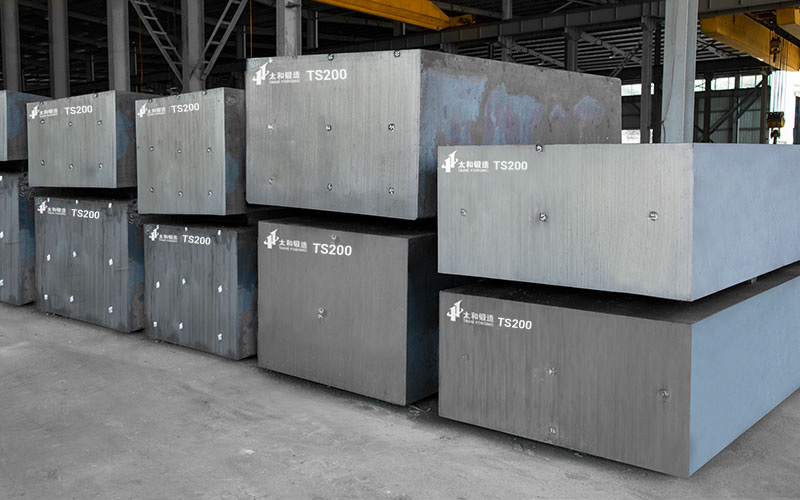Industry Park of Shangkeng
Sanmen ,Taizhou ,Zhejiang ,China
The annealing of stainless steel materials is divided i […]
The annealing of stainless steel materials is divided into general annealing and bright annealing. The brightness of the surface of the stainless steel material after bright annealing is better. Both methods will have no effect on the hardness. The premise is that it must be annealed according to the original factory specifications. A detailed analysis of the annealing method.

1 General annealing
Refers to the annealing without the protection gas, such as continuous annealing furnace heated by open flame. Such annealed strips also need to be pickled to remove the scale formed on the surface during the annealing process. Corrosion, the surface roughness decreases, so the gloss is poor, and the surface looks white and not bright.
2 Bright annealing
There are two types of bright annealing:
One is annealing with full hydrogen protection, this hydrogen comes from electrolysis or third-party supply, with high purity and low dew point;
The other is decomposition with ammonia. After decomposing, the decomposed gas enters the furnace as a protective gas after drying. The purity and dew point are relatively poor;
The two methods are similar in that hydrogen is used as the protective gas, the furnace structure is special, there is a thing called "muffle" inside, the flame first heats the "muffle", and then conducts heat through the method of heat conduction For the steel strip, the oxidation of the steel strip is avoided, so the strip steel after bright annealing does not need to be pickled again, and the steel strip basically maintains the original roughness, so the bright annealed steel strip is brighter than the general annealed steel strip.
The main alloy components of stainless steel include iron, chromium, nickel, manganese, titanium, silicon, etc. In the annealing temperature range, the oxidation of iron and nickel is not the main problem, but the oxidation interval of chromium, manganese, titanium, silicon is just in In the heating temperature range, it is the oxidation of these alloy elements that affects the surface brightness of the strip. In particular, the oxidation of chromium dechromizes the surface of the strip steel, which reduces the corrosion resistance of stainless steel. When the chromium content is 17 to 18 percent and the titanium content is 0.5 percent, the H2 dew point must be lower than minus 60 ° C to avoid oxidation of chromium and titanium in the heating range of 800C to 1150 ° C.
In addition, how to maintain the purity of the protective gas in the furnace is also a key issue. In this regard, the muffle cover has good sealing performance, and will not cause pollution to the protective atmosphere such as the material of the electric heating furnace body, providing a purer environmental space. In addition, the steel inlet and outlet of the vertical furnace are located in the lowermost part of the furnace, and the furnace pressure is stable, so the risk of air entry is much smaller than that of the horizontal furnace. However, the import and export sealed boxes of the bright annealing furnace, the strip conveyance section, the tension adjustment rollers and the furnace top guide roller boxes should ensure that they meet the sealing requirements of parts per million (ppM level), so that oxygen and water vapor cannot enter and protect the gas Can't let out.
3 Some stainless steel materials are annealed by galloping force, generally just to eliminate the residual stress and stress concentration caused on the workpiece during processing, in order to avoid some parts from being easily oxidized due to environmental factors during use, or Corrosion due to stress occurs, so relaxation annealing will be applied to eliminate residual stress, but because some ultra-thin stainless steel strips require a certain strength to exist, low temperature relaxation annealing is applied.
As for why the relaxation force annealing does not become soft, but hardens, it is mainly because the annealing temperature is low, and the material does not have enough energy to drive recrystallization, so the grain deformation generated during cold working is preserved, that is to say In the "recovery", "recrystallization", and "grain growth" that people say, only at the "recovery" stage, the crystal grains will be polycrystallized, and only the shortfalls generated during processing will be moved by a short distance to release Internal stress. Therefore, the internal grains will be smaller than the original without processing. Under the same volume, the hardness of smaller grains is naturally higher, especially at room temperature. As for the hardness of the chromium oxide layer, it does not affect the overall hardness. At most, the thickness changes, and the hardness hardly affects it.
There are also certain requirements for the annealing furnace during the annealing process, and attention must be paid to the protection of the annealing furnace. The annealing furnace uses hydrogen as a protective gas. Once the hydrogen leaks, it will be very dangerous to build up inside the tower structure. Therefore, we must take relevant measures to ensure safety.